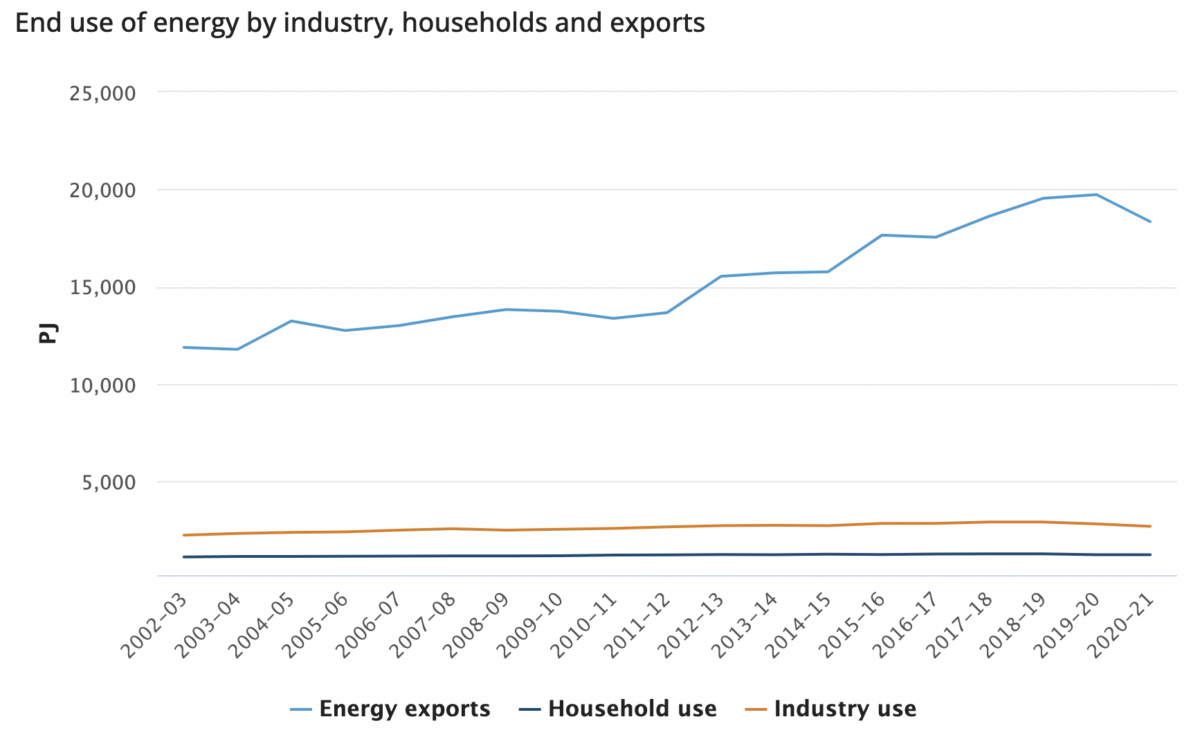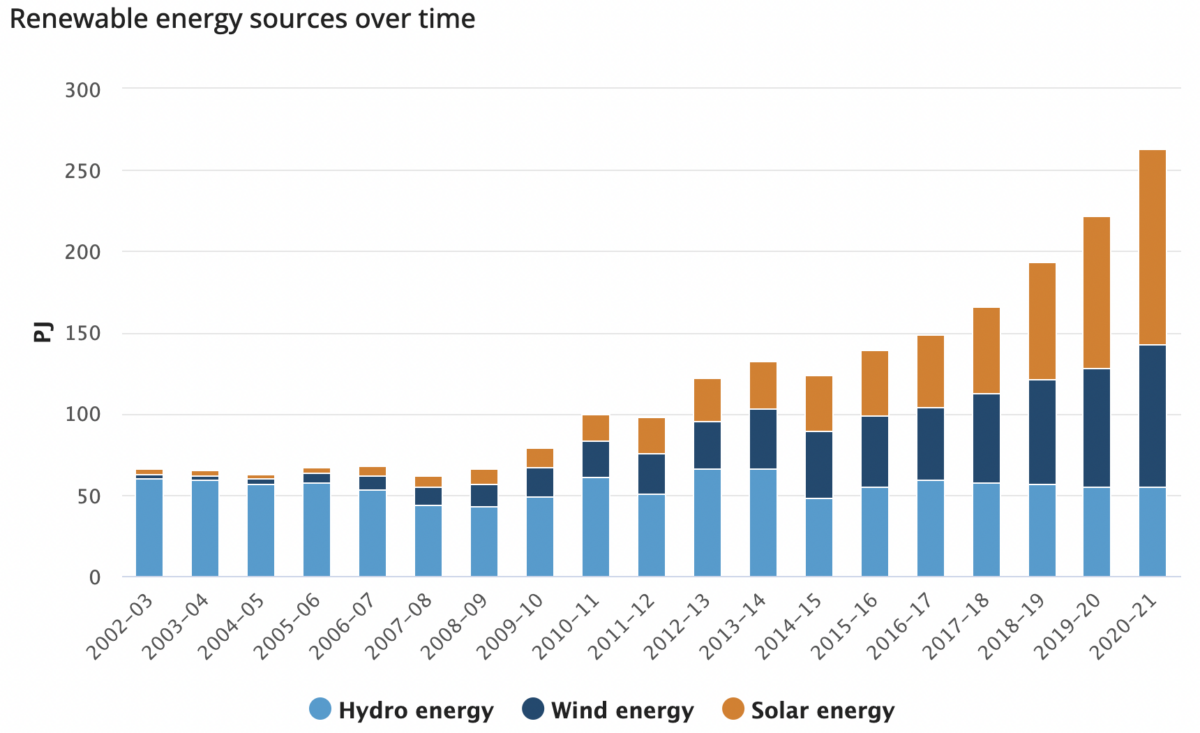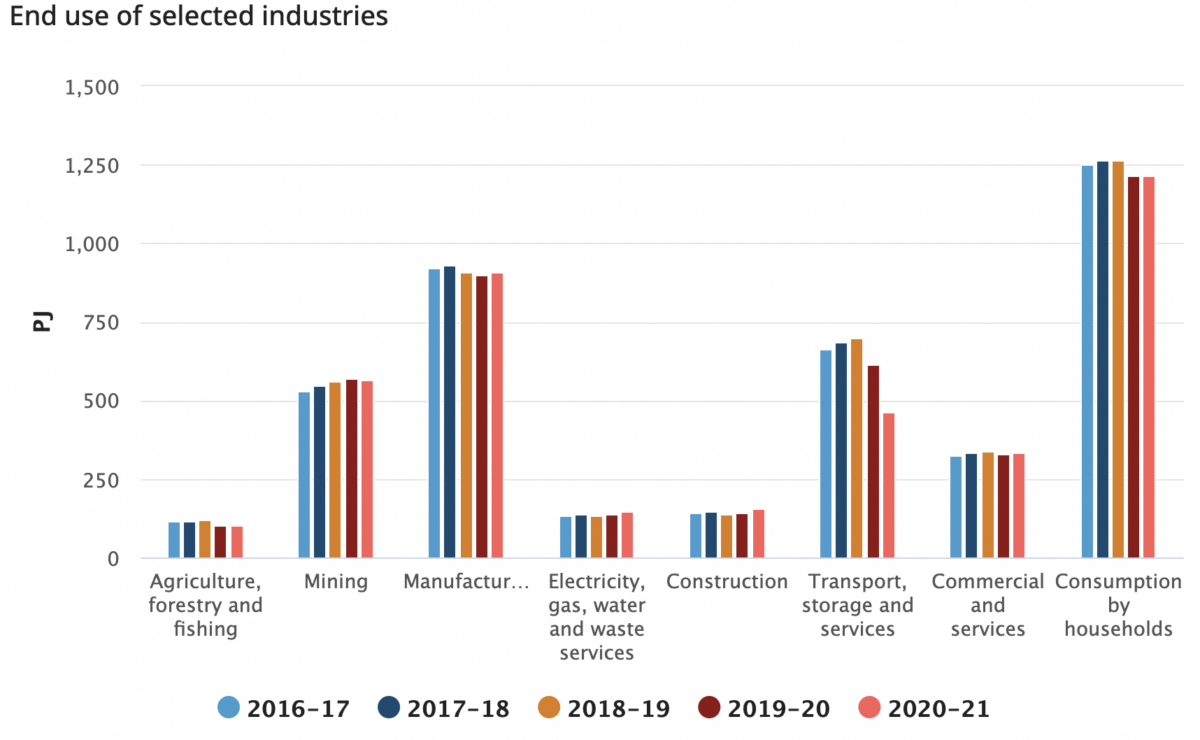Energy use among both Australian households and industry has remained alarmingly stagnant for the last two decades, the Australian Bureau of Statistics’ most recent Energy Account Australia report shows.
With the report charting statistics to 2021, it shows the country has had very little success in reducing overall consumption, necessary for meaningful emissions reductions.

“Australian businesses and homes are more power hungry than they should be, and don’t compare favourably to many other parts of the world,” Conry Tech CEO and cofounder Sam Ringwaldt said.
“Renewable energy generation cannot be the sole focus of our climate strategy. We need to cut Australia’s overall energy consumption and improve efficiency as the country transitions to green energy, because it will not be an overnight transformation,” Ringwaldt added.
Household consumption fell by a minuscule amount, from a 2019 “highpoint” of 1265 PJ per year to 1215 PJ in 2021. Industry declined slightly more, falling 4.3% in 2020-2021 from the previous year – though this looks to have largely came down to the collapse of the transport sector as a result of the Covid-19 pandemic lockdowns.
That year, the transport sector’s energy use dropped 24.1% – though later figures show the sector’s demand rebounded once global lockdowns started to lift.

Image: Australian Bureau of Statistics
Australia’s stocks of “economically demonstrated energy resources” – largely coal and gas – also grew in 2021-22. (Stocks refer to resources which remain in the ground but would be “economically exploitable” to dig up). Both coal and gas stocks grew 5.7% in 2020–2021.
Australia’s energy exports – again, largely coal and gas – decreased 7.0% to 18,338 PJ, though overall these remain high, almost double what they were in 2003.
“This is scandalous considering Australia’s potential as a green energy powerhouse. We should be much further along in our energy transition,” Ringwaldt said.
“There is an urgent need to take the biggest over-consumers of energy off the grid and focus more effort on energy conservation… As we push one lever to electrify more cars, homes, and industries, we also need to pull the other lever and reduce energy consumption of our day-to-day lives. We need to get ahead of the curve, which this report shows is not the case,” he added.
This content is protected by copyright and may not be reused. If you want to cooperate with us and would like to reuse some of our content, please contact: editors@pv-magazine.com.









By submitting this form you agree to pv magazine using your data for the purposes of publishing your comment.
Your personal data will only be disclosed or otherwise transmitted to third parties for the purposes of spam filtering or if this is necessary for technical maintenance of the website. Any other transfer to third parties will not take place unless this is justified on the basis of applicable data protection regulations or if pv magazine is legally obliged to do so.
You may revoke this consent at any time with effect for the future, in which case your personal data will be deleted immediately. Otherwise, your data will be deleted if pv magazine has processed your request or the purpose of data storage is fulfilled.
Further information on data privacy can be found in our Data Protection Policy.